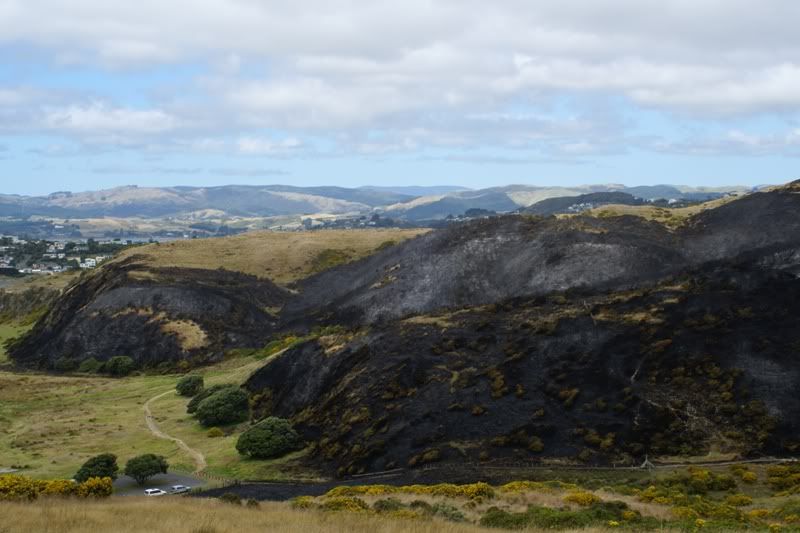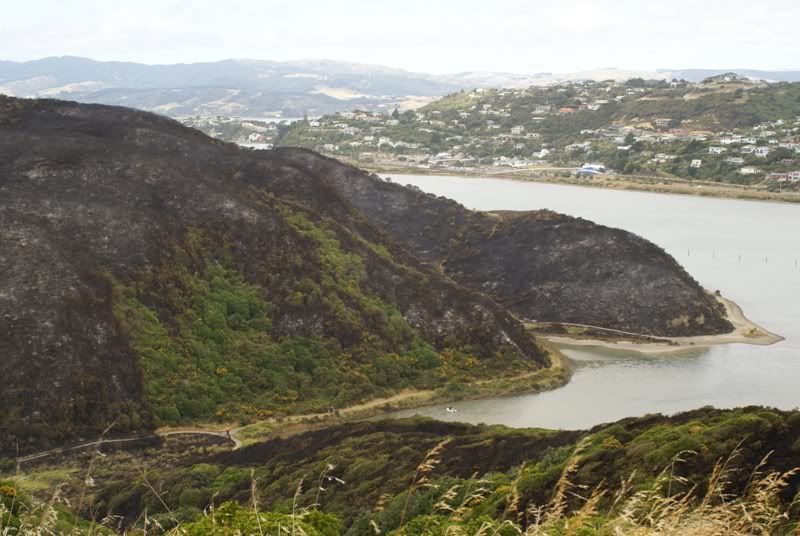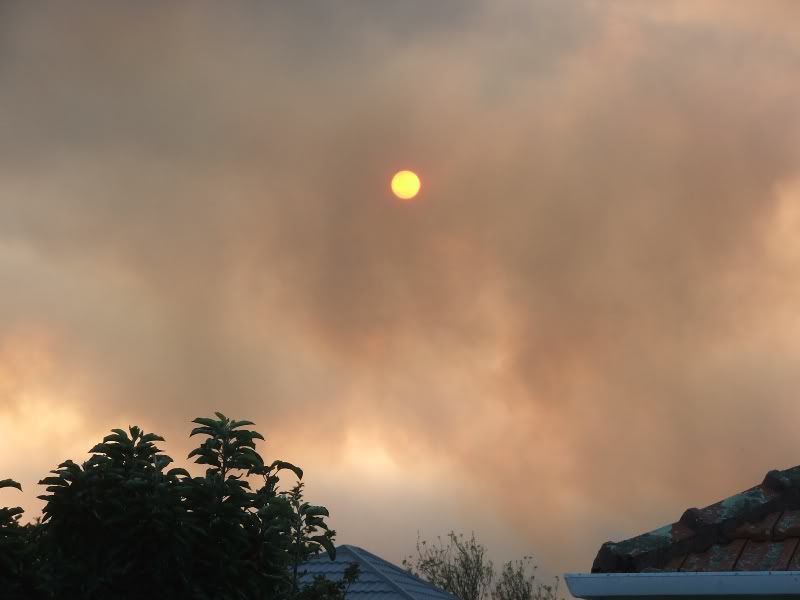|
|
Post by mumbles on Feb 9, 2010 20:12:40 GMT 12
|
|
|
|
Post by Dave Homewood on Feb 11, 2010 11:55:46 GMT 12
Those are awesome photos Sam, you were certainly in the right place to get that set of shots. Well done.
|
|
|
|
Post by corsair67 on Feb 11, 2010 21:15:15 GMT 12
Great photos, Mumbles.
Let me guess: hot, windy day, and someone from the scrap yard is using a blow torch to cut up steel?
|
|
|
|
Post by Dave Homewood on Feb 11, 2010 21:25:23 GMT 12
I reckon you should enter that set into a photo competition Sam.
|
|
|
|
Post by mumbles on Feb 11, 2010 21:48:02 GMT 12
Thanks guys
Sunday was warm, but not particularly windy. If you look at the smoke you can see the wind direction changed from northerly (right to left) to southerly (left to right) during the fire. No idea of the cause, but the scrapyard is an open to the public car dismantlers, where anyone can go in and scrounge for a fee. The Eastern Lower Hutt hills where the fire occured are mostly covered in gorse, which ignites at the drop of a hat (fire actually encourages it to germinate). There have been much more massive fires than Sunday's on those hills in the past (not on the scale of a Victorian or Californian fire, but big enough), with lots of houses close by. I remember a helicopter crashed fighting one in the late eighties when the bucket caught on a tree.
We haven't had a lot of rain in the past few weeks so the hills are dry anyway, and combined with the nature of gorse to combust at the slightest opportunity (note the fir tree survived) it doesn't take much to get things started.
|
|
|
|
Post by Dave Homewood on Feb 12, 2010 7:43:49 GMT 12
Gorse? They should have let it burn.
|
|
|
|
Post by mumbles on Feb 12, 2010 8:35:57 GMT 12
Gorse? They should have let it burn. Can't do that, for a couple of reasons. As mentioned above, mostly houses adjoin the base of the hills and some of the lower slopes, with several communications toweres on the ridge tops. Uncontrolled burns directly threaten these items. Second reason, burning gorse doesn't eliminate it, it only encourages it to proliferate and grow back denser than it was before the fire (the heat of the fire stimulates seed germination). After being cleared in the 19th century, the hills are slowly being reclaimed by native bush coming up out of the gullies (if you look in the background of some of the pics you can see this. The native cover is bright green, the gorse a dull olive drab speckled with yellow). Gorse is known botanically as a 'primary coloniser' in that it can happily become estabished and mature on bare and nutrient poor soil. By virtue of it being there it gradually enriches the soil and makes it suitable for other species. Gorse isn't shade tolerant so it can't live in the gullies. The natives tend to be taller than the gorse, so bit by bit, they encroach, shade the gorse and kill it. I've been watching this process for the last fifteen years or so, and there is definitely more green up there than there used to be. Fire derails this process, since the natives will burn as well. |
|
|
|
Post by Dave Homewood on Feb 12, 2010 8:51:04 GMT 12
Fair enough.
|
|
|
|
Post by Brett on Feb 22, 2010 8:13:24 GMT 12
The Helipro boys were busy last night as well. The light wasn't very good for photography, so this is the pick of the bunch.  Cheers, Brett |
|
|
|
Post by Dave Homewood on Feb 22, 2010 9:17:53 GMT 12
That's a dramatic photo Brett, was that at Titahi Bay?
|
|
|
|
Post by kiwithrottlejockey on Feb 22, 2010 12:14:53 GMT 12
Regarding that fire in the hills above Wingate on Sunday 7th February, I passed through there not long after 6:00pm with a train heading for Wellington. There was such a huge crowd of spectators on the footbridge at Wingate railway station that I was worried about the structual integrity of the bridge. Those footbridges aren't designed to hold that many people at the same time. I reported it to the Network Control Manager and they had engineers carry out a survey of the bridge the following day to ensure it hadn't been damaged in any way.
The helicopter was still there when I passed back through Wingate on the return journey to Wairarapa at about 7:20pm, but it looked like they were starting to pack things up.
|
|
|
|
Post by mumbles on Feb 23, 2010 21:57:34 GMT 12
Regarding that fire in the hills above Wingate on Sunday 7th February, I passed through there not long after 6:00pm with a train heading for Wellington. There was such a huge crowd of spectators on the footbridge at Wingate railway station that I was worried about the structual integrity of the bridge. Those footbridges aren't designed to hold that many people at the same time. I reported it to the Network Control Manager and they had engineers carry out a survey of the bridge the following day to ensure it hadn't been damaged in any way. Thats interesting, I thought they would have been designed with the weight of a disembarking trainload of commuters in mind (albeit 60 something years ago). When I was on the bridge between about 5 and 5:30pm there were never more than about half a dozen people on it at once. Vibration from people walking past was noticeable though. Thats a good shot against the smoke Brett. Here are some shots of the aftermath of the Titahi Bay fire, taken yesterday when some of it was still smouldering. From across the Paremata inlet at Papakowhai. The whole east side of this ridge was burned down to the water.  The spurs show how close the fire got to houses. Very touch and go there.  From Whitireia Park   And from one of the roads people were evacuated from. Not soemthing you would want to watch happening outside your back window  Smoke obscuring the sun in Lower Hutt, about 8 miles SSE of the fire.  There is an excellent set of photos here www.stuff.co.nz/dominion-post/local/3361384/Nature-hit-worst-by-raging-Titahi-Bay-fire including a great aerial shot showing the full size of the burn. |
|

